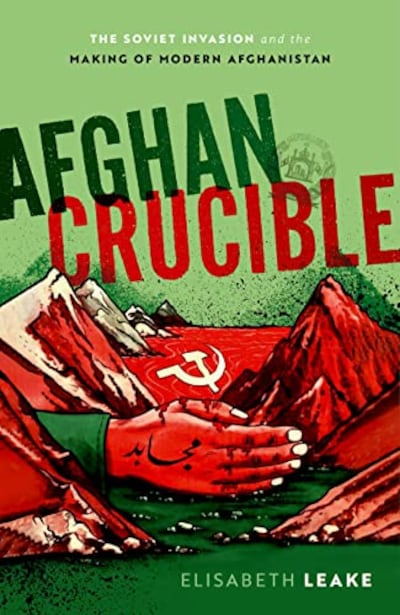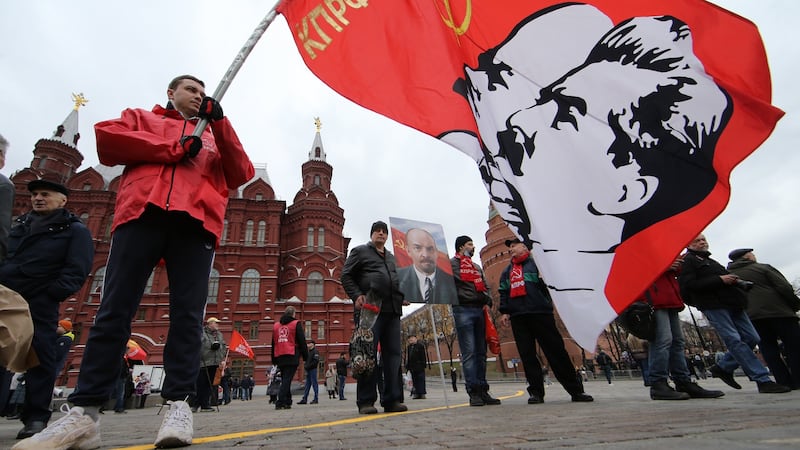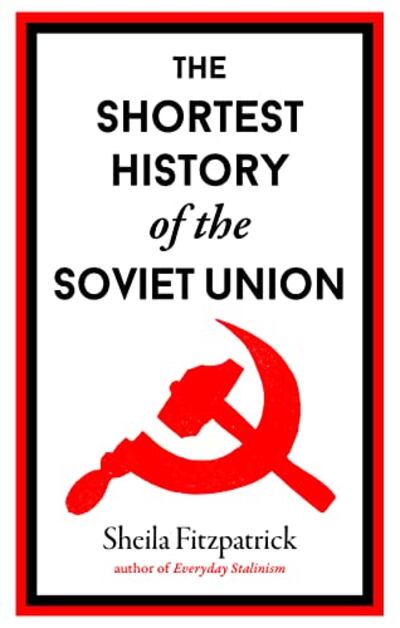The grandfathers of those fighting each other in Ukraine are not only of a different generation, they come from a different country. Forty years ago they fought on the same side in another war. So too did the Armenians and Azeris, who have been armed opponents for decades in Nagorno-Karabakh. That obsolete country, the Union of Soviet Socialist Republics (USSR), was the homeland of their generation, the place of their school days, their military service and their peacetime occupations.
That long-departed land is recreated in Sheila Fitzpatrick’s The Shortest History of the Soviet Union, while the war in which those grandfathers fought provides the main background to Elisabeth Leake’s Afghan Crucible.

Fitzpatrick, an Australian authority on all things Soviet, has compressed more than 70 years of history into a work than can be read in a day or two, and she has done so without the loss of accuracy to which many such efforts are prone. Her book, as well as providing valuable references to historical facts, is interspersed with short articles on who the inhabitants of the USSR were and how they lived.
They were taught to mistrust the capitalist West but they liked jazz. They were expected to admire their leaders but they spent a lot of time ridiculing them. They lived in a world that preached the Marxist inevitability of success over capitalism. They joked about the “bright future” that was in store at some mythical future date and they were stunned when it all came to an end in 1991.
I was there as the correspondent of this newspaper when that stunning event took place. I lived in Moscow and travelled through the Soviet land. I listened to their complaints and I heard their jokes. A friend had a car whose steering was faulty. He denounced it as a “right deviationist”. I saw the strange contradictions of life. The shops were almost empty but when invited to dinner by friends, their tables were groaning with food.
On the political level Fitzpatrick makes a point that has rarely been made elsewhere but rings true to those of us who were there.

The Soviet Union did not quite collapse of its own accord. There were personal as well as political impulses involved in its demise. In that crucial year of 1991 there were two rival presidencies in Moscow. Fitzpatrick compares the situation to Princess Diana’s view that her marriage was “a bit crowded”. Mikhail Gorbachev was president of the Soviet Union and Boris Yeltsin was president of the Russian Federation. Had Gorbachev resigned in the immediate aftermath of the botched coup in August 1991 and handed power to Yeltsin, the USSR might not have fully disintegrated. Yeltsin would have had a personal interest in its survival rather than in its destruction. It would not have been communist but it would have retained a larger geographical territory. Power in Russia may not even have fallen into the hands Vladimir Vladimirovich Putin.

Soviet demise
Some of those grandfathers who fought in Afghanistan were glad to see the Soviet Union’s demise. Many retained a certain nostalgia for the old days despite the hardships of everyday life, political repression and restrictions on individual freedom. The USSR, after all, was the country of their youth, of the prime of their lives. But Afghanistan changed things utterly.
The man who sent them there was Leonid Ilyich Brezhnev, a thoroughly Soviet person. He was born into a Russian-speaking family in Ukraine. Some of his documents declared his nationality to be Russian; others, including his passport, stated that he was Ukrainian. In effect he was neither. Brezhnev was a Soviet. He rose to the top of his country’s politics as general secretary of the Communist Party. He delivered his addresses to the party congress in Russian with a distinct Ukrainian accent. Russians affectionately joked about his pronunciation of Indira Gandhi as Indira Handy. To Ukrainians it meant he was “one of us”.
Brezhnev sent the troops into Afghanistan at a time that country was at war with itself. He did so against a background of military success in Angola and Ethiopia. The temptation to gain a further advantage over the United States was very strong and he fell for it. The consequences of defeat and withdrawal can be seen even today.
The soldiers returned to Russia and Ukraine, and Armenia and Azerbaijan, in a mood of despair that is aptly described by Leake. Some had taken to alcohol and drugs. They passed on a resentment of military adventure to the next generation, and I witnessed this in person. In Moscow I had seen members of the largely conscript army turned out like ragamuffins with their caps slouched on the back of their heads, their tunics unbuttoned and their boots unshone.
It was surprising, therefore, on a visit to Sevastopol in Crimea to see sailors from the Black Sea fleet impeccably turned out in clean and carefully kept uniforms. When I mentioned this to my guide, naval captain Savchenko, his response was short and sharp: “The navy” he said “was not in Afghanistan”.
In the end Gorbachev withdrew his troops based on a cost-benefit analysis of the return on roubles spent
Leake, associate professor of history at the University of Leeds, has produced a meticulous study of of the Soviet invasion and the making of modern Afghanistan. It is a detailed work on a very complicated series of events and is more likely to appeal to other academics and serious students of Afghan history than to the reader with a casual interest in the subject.
The Soviet politicians’ and soldiers’ roles are given in some detail but the internal struggles of the people of Afghanistan in all their ethnic and political complexity make up the bulk of a work that will provide an important contribution to the understanding of a country that was a major theatre of operations, militarily and politically, during the cold war and its aftermath. In the end Gorbachev withdrew his troops based on a cost-benefit analysis of the return on roubles spent. The days of Marxist victory, whatever the cost, had come to an end.
The USSR’s successor state, the Russian Federation, has been involved in a succession of wars since 1991. Two of them, internally against Chechen rebels, led to further dissipation of military morale. A third in Syria presented a mirage of increased power. The current conflict in Ukraine has been costly financially and in lives. One hopes a similar cost-benefit analysis could bring these hostilities to an end.

















